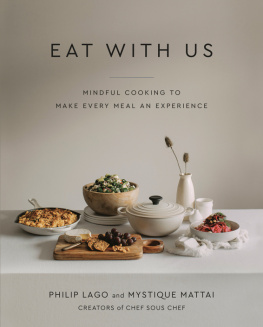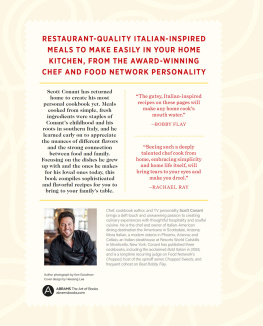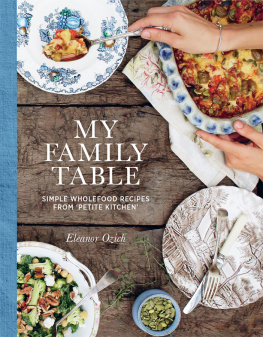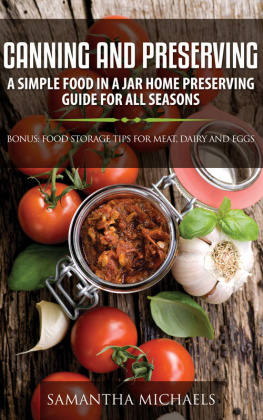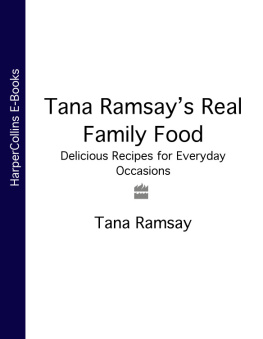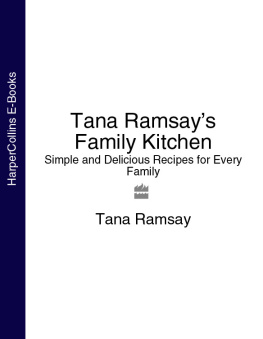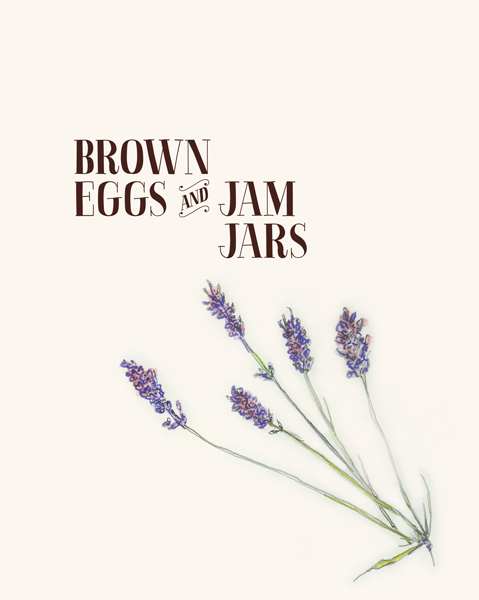


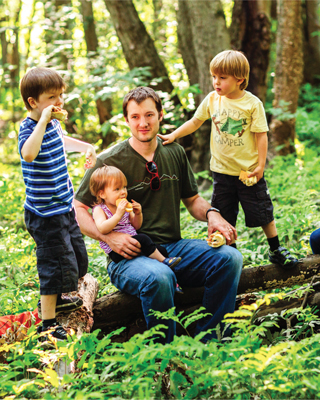
To Danny, with gratitude for his lasting love, support and all the extra-hot, maple-sweetened cups of coffee

CONTENTS
INTRODUCTION
I always imagined I would raise a family just as I had been brought up, in the countryside with hay fields to run through at sunset and a lake to wade in on blistering July afternoons. Wed have an orchard, or a sprawling raspberry patch, and wed grow our own vegetables in tidy rows on this homestead.
It wasnt until I was pregnant with my second child, living in a Montreal suburb, that I realized the rural move was an impractical dream. As most young families do, we had settled where there was good, steady work. We had bought our first house near family, understanding the value of those relationships, and we had surrounded ourselves with a close group of friends. Who is to say that escaping to the countryand that coveted berry patchwould have brought us more fulfillment than our current community?
But true happiness comes from within, no matter the exterior circumstances, and eventually I realized that many of the simple joys I had experienced as a child in the country could be reproduced in an urban home. What was stopping me from introducing the country girl to city life?
Our journey as urban homesteaders
My husband, Danny, and I began with small steps. We dug up a portion of lawn and planted a garden. A few prickly raspberry canes in the corner, two mounds of soil with rhubarb crowns, a row of oregano along the stone paththese were the first plants to go into the soil, and always the first to show signs of life in the spring. As they thrived, so did I, and my garden corner of the yard brought much contentment.
Next, I dusted off a relic I had managed to abscond with when I left home: my mothers handwritten cookbook. Working my way through it, I experimented with my grandmothers canning recipes, preserved on faded yellow paper, marked up with notes in the margins. From pickles to tomatoes, most recipes were for large batchesBaba was a Ukrainian farmers wife on the Canadian Prairiesand so I always ended up with far more than our little family of four could use. I started an annual preserves swap, both to share my bounty and to encourage my friends to take up the old custom of preserving. It helped that canning was making a sweeping comeback, both on food blogs and in magazines.
More preserving occurred thanks to acquaintances who gave me free access to their backyard brambles after they had harvested their fill. I brought home armfuls of rhubarb and buckets of red currants and filled the backseat of my car with grapes and crab apples, with a basket full of mint and oregano spears on the front seat. Back in my kitchen, while my babies slept, I turned the rhubarb into jam and the currants into luscious syrup. I gently stewed the grapes and hung them overnight in cheesecloth to extract their sweet, dark juice. The crab apples went into a quart jar along with a real splurgea bottle of vodka and a cup of sugar. I wrapped it up and set it in a dark place until Christmas, when I portioned a translucent crab apple liquor into small jars and gave them out as gifts. It took a few seasons, but eventually I was heading into each winter with an ample selection of jams, jellies and preserves. I was homesteading in my own way, and it felt wonderful.
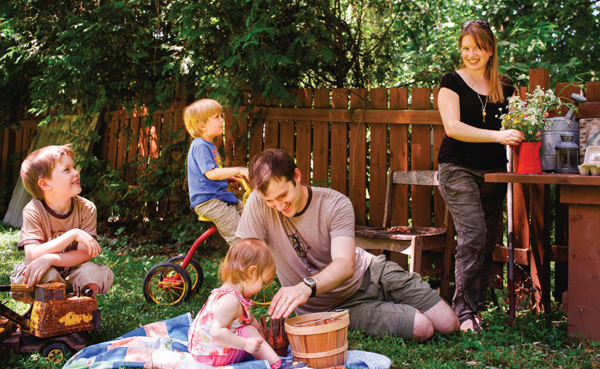
Over the next few years, we took more steps toward embracing the traditional-foods movement. We visited orchards in spring and again in the fall, both glorious times of the year to escape suburbia. We sought out local growers for our insatiable appetite for berries and braved the U-picks with a toddler and a baby. We dropped in on a beef farm to show our boys where beef came from and left with half a grass-fed cow in frozen, vacuum-sealed packages. I cant remember when we started composting, but it was all part of the seemingly natural progression into urban homesteading. Somewhere along the way we started talking about getting chickens, and rain barrels, and a real fire pit right about when we started looking for our next homestill within city limits, but with a sliver more of land.
From the moment I set foot onto our future property, I knew it was something magical. From the lane, where we were parked next to the leaning realtors sign, the house didnt look like much: a two-story white house with tired green shutters and no shrubbery befriending the wraparound porch. The backyard, however, took my breath away. A long, emerald lawn sloped down to the edge of a maple forest, luminous with color in the autumn sunshine. Immense cedar hedges and one massive weeping willow lined the sides of the yard, giving the space a secluded feeling. Although the yard itself was exceptionally bare, I could already envision a wooden swing set and a row of raised vegetable beds. If I squinted hard enough, I could even picture a small chicken coop off to the side, and beyond, a clearing in the trees with a fire pit. Oh, the potential! We moved in shortly before the first snow, five years ago, and put down our first roots.
In a thoroughly modern world filled with every grocery convenience imaginable, Ive chosen to invest time in age-old traditions that center around the kitchen. On that third of an acre where we settled just outside Montreal, I preserve produce in season, maintain a kitchen garden, keep a small flock of hens and tap maple trees in spring.
Along with my husband, Danny, I am passing on to my childrennine-year-old Noah, seven-year-old Mateo and little Clara, threevalues about food culture based on my own childhood memories.
My history of homemade
When I tell people I was a goatherd girl, they look dubious. Yet this simple remark, accurately reflecting my primitive past, is often the hardest for people to wrap their heads around. Its not the fact that my family lived rurally with no running water, telephone or electricity; nor that my mother homeschooled me, my brother and two sisters; nor that we raised all of our own produce on our tiny lakeside property. But the eyebrows inevitably shoot up when I mention the goats. Its true, Danny usually chimes in. And shed milk them and make cheese with her mother in their rustic country kitchen. Eventually, after a story or two about my goat-herding past, my friends admit that they now better understand my current romance with urban homesteading.
When I was a child, each day began with collecting eggs from the nests in the henhouse and snipping herbs from the garden for our omelets. There was homemade bread to toast and spread with homemade wild strawberry jam, and our own yogurt to spoon over bowls of fragrant stone fruits wed preserved in honey syrup. My family of six gathered around the thick oak table set with my parents Royal Doulton wedding china, and thus began our day, sharing a wholesome breakfast almost entirely produced on our tiny quarter acre in Northern Canada.
Next page


